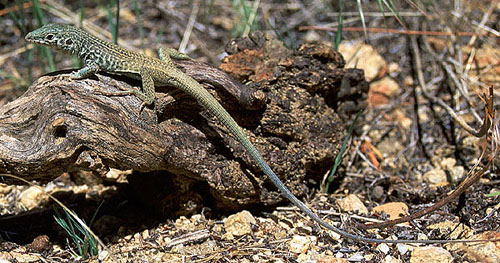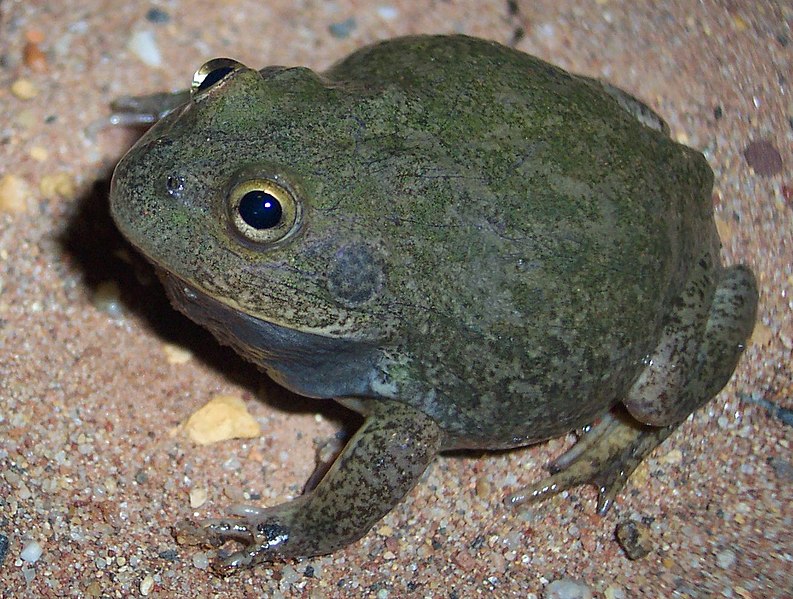Tortoises are among the most highly-desired of reptile pets, but their care is fraught with difficulties, and captive death rates remain surprisingly high. The plucky Russian, Horsefield’s or Central Asian tortoise (Testudo horsfieldi) is often promulgated as an ideal “first tortoise”.
A Cold Hearty Tortoise?
 In many regards this is true. Unlike most of its relatives, the little Russian tortoise is quite cold hearty. Its range (three subspecies) extends from the southeastern coast of the Caspian Sea through Kazakhstan to western China and south to Iran, and encompasses some very cold regions. Tortoises living in the north may be active for a mere three months each year.
In many regards this is true. Unlike most of its relatives, the little Russian tortoise is quite cold hearty. Its range (three subspecies) extends from the southeastern coast of the Caspian Sea through Kazakhstan to western China and south to Iran, and encompasses some very cold regions. Tortoises living in the north may be active for a mere three months each year.
Living on Little
The Russian tortoise’s adaptation to a Spartan diet also suits it to captivity. Generally, it subsists upon dry grasses, with only limited access to flowers, herbaceous plants and fruits. Individuals in some populations rarely encounter standing water.
Size
Size also recommends the Russian tortoise as a pet…it tops out at 8.8 inches, and many are considerably smaller.
Nearly round in profile, the Russian tortoise is pleasantly colored in light to yellowish brown, and patterned with dark blotches.
Some Cautions
For all of the above reasons, it is a Russian tortoise that is often taken home by those new to tortoise-keeping. Unfortunately, thousands perish each year, often because their owners were initially supplied with misleading advice.
Space and Cage Style
Despite their small size, Russian tortoises are far more active than other reptiles…even the largest of glass aquariums is inadequate. You must think in terms of a 4-6’ x 4-6’ enclosure.
Glass aquariums, unless ventilated via fan, also do not provide sufficient air flow. As humidity rises, respiratory problems are a near certainty.
Ideally, these tortoises should be housed outdoors throughout the warmer months. Outdoor bird aviaries work well, although you may need to install an opaque, plastic barrier along the lower wall edge to prevent climbing. If you must keep your tortoise indoors, a custom-build enclosure is needed (please write in for details).
Environmental Conditions
Indoors or out, Russian tortoises require deep, dry substrates – grass and moist soil will not do. A mix of sandy soil and oyster shell is ideal. If unable to construct nighttime sleeping pallets (excavations), Russian tortoises become stressed and subject to dehydration-related disorders.
Pros and Cons
With proper care, the Russian tortoise can indeed be a most responsive and long-lived pet. However, they are by no means animals to be purchased lightly. Please consider your abilities carefully, and write in if you have any questions whatsoever.
I hesitate to discourage responsible people from keeping these fine animals…tortoises ranging from the tiny South African padloper to the massive giants of Aldabra and the Galapagos Islands have provided me with some of my most memorable herp-keeping experiences. Yet I hesitate to paint too rosy a picture. Please write in regarding your specific situation, and I’ll do my best to advise you appropriately.
The Russian tortoise owner must also take into consideration those other factors critical to the care of all tortoises – diet, UVA/UVB exposure, humidity levels, etc.. We’ll take a look at these and other subjects in future articles.
Further Reading
Please check out A Complete Guide to Russian Tortoises in our Reptile Books Department.
An interesting article detailing the natural history of Russian tortoises in a harsh environment is published in the journal Ecography at
http://www.bio.usyd.edu.au/Shinelab/staff/xavier/ecography2003.pdf

 Many of the substrates traditionally used for such creatures, including most types of sand, harbor molds and fungi when damp. Although not a problem (in limited-contact situations) for all desert animals, some are especially sensitive and quickly succumb to skin and respiratory infections.
Many of the substrates traditionally used for such creatures, including most types of sand, harbor molds and fungi when damp. Although not a problem (in limited-contact situations) for all desert animals, some are especially sensitive and quickly succumb to skin and respiratory infections. That Reptile Blog – Reptile, Amphibian and Exotic Pet Care and Information
That Reptile Blog – Reptile, Amphibian and Exotic Pet Care and Information

 A week after her departure, another coworker phoned me at 4 AM, frantically speaking in the rapid fire Spanish typical of her native Venezuela…and which I have great difficulty in grasping at 4 PM, much less 4 AM! Eventually I learned that 3 elderly millipede researchers had passed away recently, and that preliminary evidence indicated that cyanide poisoning, courtesy of the millipedes’ defensive chemicals, was suspected. I was warned against handling the millipedes (which I had been doing for weeks!) or putting them near my face (which I do not do with any creature).
A week after her departure, another coworker phoned me at 4 AM, frantically speaking in the rapid fire Spanish typical of her native Venezuela…and which I have great difficulty in grasping at 4 PM, much less 4 AM! Eventually I learned that 3 elderly millipede researchers had passed away recently, and that preliminary evidence indicated that cyanide poisoning, courtesy of the millipedes’ defensive chemicals, was suspected. I was warned against handling the millipedes (which I had been doing for weeks!) or putting them near my face (which I do not do with any creature). Tarantulas often line terrarium glass with silk, thwarting our efforts to observe them. However, they are less likely to do this if you cover the outside of the glass (that portion that fronts along the burrow) with black paper or cardboard, hinged at the top with tape. If you lift this gently, the spider may remain on view.
Tarantulas often line terrarium glass with silk, thwarting our efforts to observe them. However, they are less likely to do this if you cover the outside of the glass (that portion that fronts along the burrow) with black paper or cardboard, hinged at the top with tape. If you lift this gently, the spider may remain on view. Some years ago I acquired a group of Australian water-holding frogs (Cyclorana platycephala) and found them to be among the amphibian world’s most accomplished burrowers. To learn more about these amazing creatures, please see
Some years ago I acquired a group of Australian water-holding frogs (Cyclorana platycephala) and found them to be among the amphibian world’s most accomplished burrowers. To learn more about these amazing creatures, please see  In many regards this is true. Unlike most of its relatives, the little Russian tortoise is quite cold hearty. Its range (three subspecies) extends from the southeastern coast of the Caspian Sea through Kazakhstan to western China and south to Iran, and encompasses some very cold regions. Tortoises living in the north may be active for a mere three months each year.
In many regards this is true. Unlike most of its relatives, the little Russian tortoise is quite cold hearty. Its range (three subspecies) extends from the southeastern coast of the Caspian Sea through Kazakhstan to western China and south to Iran, and encompasses some very cold regions. Tortoises living in the north may be active for a mere three months each year. Although nocturnal, assume that bent-toed geckos require UVB radiation (others in the genus seem prone to metabolic bone disease). As these lizards generally do not bask at very high temperatures, a fluorescent bulb is preferable. Among florescent models, the
Although nocturnal, assume that bent-toed geckos require UVB radiation (others in the genus seem prone to metabolic bone disease). As these lizards generally do not bask at very high temperatures, a fluorescent bulb is preferable. Among florescent models, the